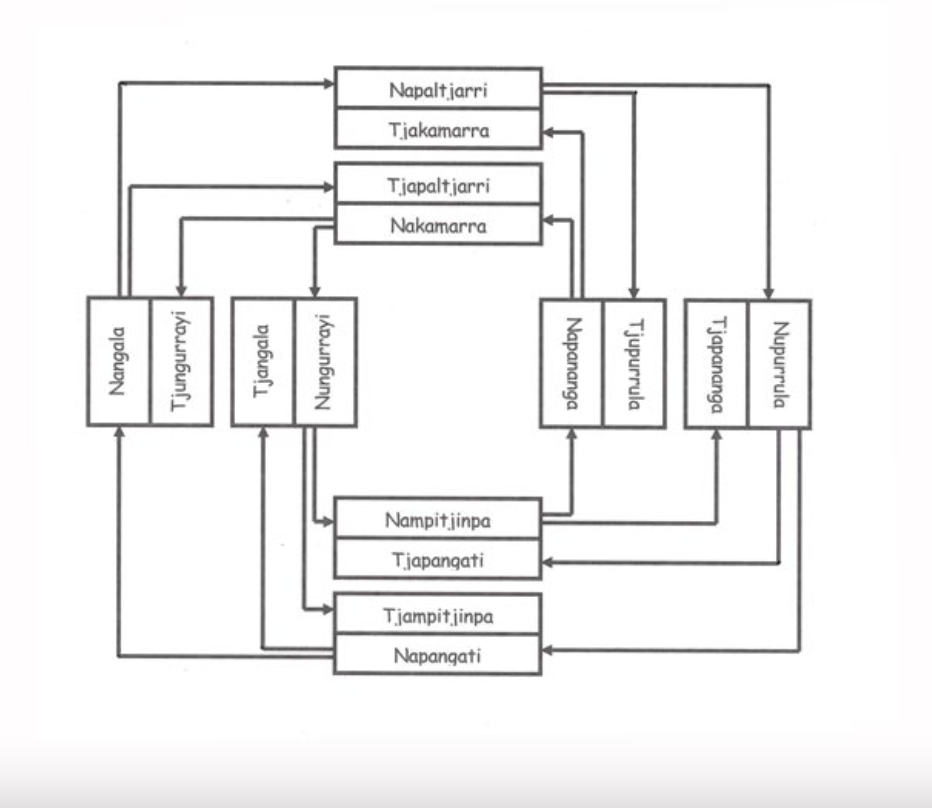Aboriginal Tribes or Clans
The term Aboriginal Tribes was given to the Aboriginies living in groups by European settlers
The people themselves tend to identify themselves as members of a clan or language group not an Aboriginal tribe as such.
Clan names such as Warlpiri Yolgnu Alawa Pinjantjatjara or Arrente people rather than as a collective group the Aboriginal tribes
.The tribes or language groups that existed at the time of the settlement or invasion of their native lands regarded themselves as separate nations.
They had occasional contact with each other, traded with each other and at times provided safe contact through their lands and other times they fought with each other.The tribes had similar social structures based on kinship rules which divided the tribes in to sub sections.
Your place was determined by your birth into a certain moiety skin group or totem.
However these structures did differ from tribe to tribe.
They also had similar spiritual beliefs based on creation stories and the Dreamtime.
There were many Aboriginal tribes at the time of colonization with estimates of around 400 individual tribes.
Some of these tribes were wiped out during the early years of settlement.
In particular those tribes living in the more fertile areas of first settlement area by Europeans as they took their lands for farming and grazing.They were also affected by the diseases the Europeans bought with them.
In 1789 a small pox epidemic almost decimated the Cardigal tribe who were the tribe inhabiting the lands around Sydney.
By 1791 there were only 3 of the original tribe remaining alive.
In Tasmania the Aboriginal population was also wiped out.
The last remaining 200 Palawa people were taken to Flinders Island for their protection.
However disease continued to afflict them and the last remaining full blood Palawa, Truganini died in 1876.Although these tribal groups died out there are still today aboriginal people who can trace the ancestors back to the Palawa.
This is largely because there were many liasons between European sealers and farmers who took the women by force or traded for them.
In some cases also by mutual consent and produced the half caste, yellow fella or mixed blood aboriginal person of today.
The areas in which the Aboriginal tribe inhabited influenced their way of life.
The people in the more fertile areas could be more stable as they did not have such a struggle to gather food.
However these tribes were the ones to suffer most by European settlement as the lands they occupied were what the settlers wanted.
The tribes in the less fertile and less accessible areas were left undisturbed for longer and some of those tribes such as the Pintubi, Kukata Wailbiri and Pinjantjatjara tribes of the Western Desert had their first contact in the 1960s. The last Pintubi to come in from the desert is believed to be in 1984.
These Aboriginal tribes of the desert and also of Arnhem Land have maintained their spiritual beliefs, their kinship systems and laws and in these areas the culture has been preserved to some extent largely due to their inaccessibility or remoteness.
SKIN GROUPS OR SKIN NAMES OF THE PINTUPI OF THE WESTERN DESERT
The cultural custody of each painting is determined by tribal skin relationships. There are eight male skin groups (beginning with T) and eight female skin groups (beginning with N. Joined boxes show correct marriage. Arrows point from the marriage partners to the children.
The spelling of the skin names are taken from the book Papunya Tula which was written by Geoffrey Bardon, now deceased and published in 1999 by J.B. Books, Australia. The skin names are often spelt differently in the popular press with the most common error being the omission of the "T" from the male name groups.
Each of the language groups would have a similar kinship relation as shown below.

© Copyright 2010 All Rights Reserved No Reproduction Permitted Without Permission
Address : Michael Moriarty, PO Box 14, Berry Springs, NT, 0838, Australia